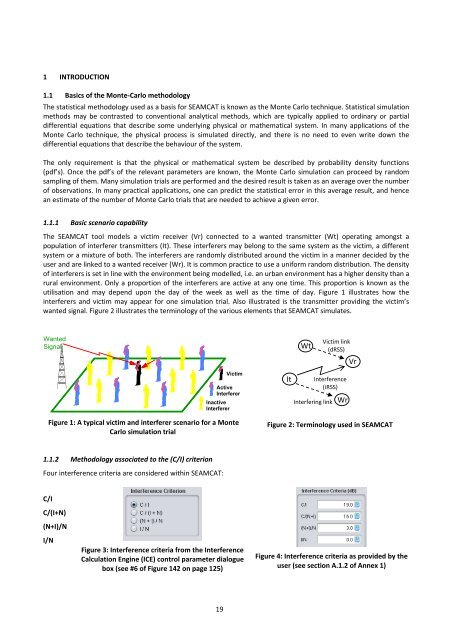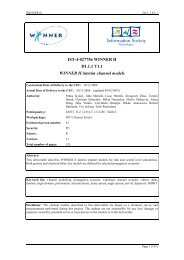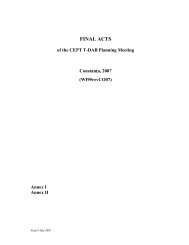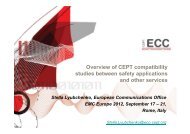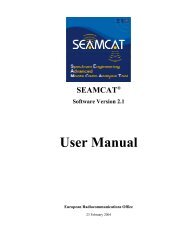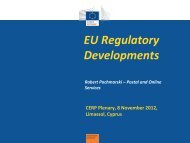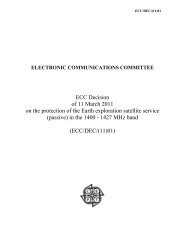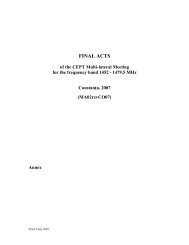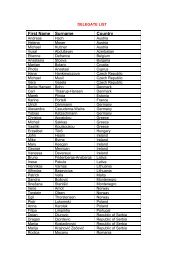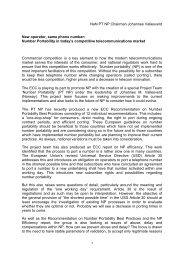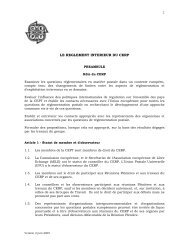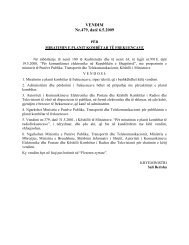SEAMCAT Handbook (pdf) - Cept
SEAMCAT Handbook (pdf) - Cept
SEAMCAT Handbook (pdf) - Cept
- No tags were found...
You also want an ePaper? Increase the reach of your titles
YUMPU automatically turns print PDFs into web optimized ePapers that Google loves.
1 INTRODUCTION1.1 Basics of the Monte‐Carlo methodologyThe statistical methodology used as a basis for <strong>SEAMCAT</strong> is known as the Monte Carlo technique. Statistical simulationmethods may be contrasted to conventional analytical methods, which are typically applied to ordinary or partialdifferential equations that describe some underlying physical or mathematical system. In many applications of theMonte Carlo technique, the physical process is simulated directly, and there is no need to even write down thedifferential equations that describe the behaviour of the system.The only requirement is that the physical or mathematical system be described by probability density functions(<strong>pdf</strong>’s). Once the <strong>pdf</strong>’s of the relevant parameters are known, the Monte Carlo simulation can proceed by randomsampling of them. Many simulation trials are performed and the desired result is taken as an average over the numberof observations. In many practical applications, one can predict the statistical error in this average result, and hencean estimate of the number of Monte Carlo trials that are needed to achieve a given error.1.1.1 Basic scenario capabilityThe <strong>SEAMCAT</strong> tool models a victim receiver (Vr) connected to a wanted transmitter (Wt) operating amongst apopulation of interferer transmitters (It). These interferers may belong to the same system as the victim, a differentsystem or a mixture of both. The interferers are randomly distributed around the victim in a manner decided by theuser and are linked to a wanted receiver (Wr). It is common practice to use a uniform random distribution. The densityof interferers is set in line with the environment being modelled, i.e. an urban environment has a higher density than arural environment. Only a proportion of the interferers are active at any one time. This proportion is known as theutilisation and may depend upon the day of the week as well as the time of day. Figure 1 illustrates how theinterferers and victim may appear for one simulation trial. Also illustrated is the transmitter providing the victim’swanted signal. Figure 2 illustrates the terminology of the various elements that <strong>SEAMCAT</strong> simulates.WantedSignalVictimActiveInterfererInactiveInterfererItWtInterference(iRSS)Interfering linkVictim link(dRSS)WrVrFigure 1: A typical victim and interferer scenario for a MonteCarlo simulation trialFigure 2: Terminology used in <strong>SEAMCAT</strong>1.1.2 Methodology associated to the (C/I) criterionFour interference criteria are considered within <strong>SEAMCAT</strong>:C/IC/(I+N)(N+I)/NI/NFigure 3: Interference criteria from the InterferenceCalculation Engine (ICE) control parameter dialoguebox (see #6 of Figure 142 on page 125)Figure 4: Interference criteria as provided by theuser (see section A.1.2 of Annex 1)19


